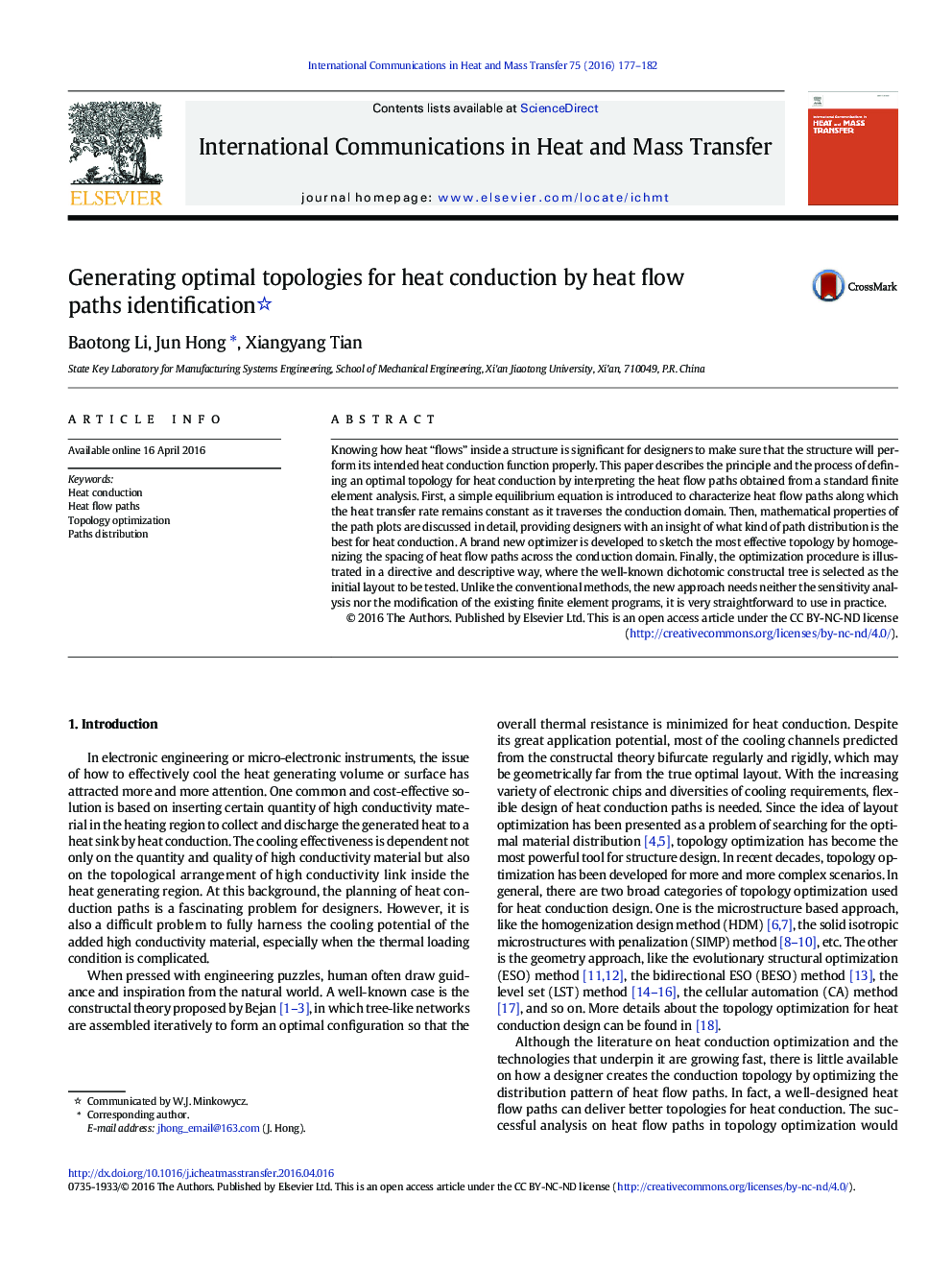| کد مقاله | کد نشریه | سال انتشار | مقاله انگلیسی | نسخه تمام متن |
|---|---|---|---|---|
| 7053320 | 1457479 | 2016 | 6 صفحه PDF | دانلود رایگان |
عنوان انگلیسی مقاله ISI
Generating optimal topologies for heat conduction by heat flow paths identification
ترجمه فارسی عنوان
تولید توپولوژی مطلوب برای هدایت گرما با شناسایی مسیرهای جریان گرما
دانلود مقاله + سفارش ترجمه
دانلود مقاله ISI انگلیسی
رایگان برای ایرانیان
کلمات کلیدی
انتقال حرارت، مسیرهای جریان گرما، بهینه سازی توپولوژی، توزیع مسیرها،
ترجمه چکیده
دانستن چگونگی گرما در داخل ساختار برای طراحان قابل توجه است تا مطمئن شود که ساختار به درستی عملکرد هدایت حرارتی خود را انجام خواهد داد. این مقاله اصل و فرایند تعریف توپولوژی بهینه برای هدایت گرما را با تفسیر مسیرهای جریان گرما که از یک عنصر استاندارد عددی محدود می شود، توصیف می کند. اولا یک معادله تعادل ساده برای توصیف مسیرهای جریان گرما معرفی می شود که در آن سرعت انتقال حرارت با عبور دامنه هدایت ثابت باقی می ماند. سپس خواص ریاضی قطعه های مسیر به طور دقیق مورد بحث قرار می گیرند و طراحان را با درک دقیق تر از آنچه که برای هدایت گرما مناسب است، توزیع می کند. بهینه سازی نام تجاری جدید برای طراحی نقشه موثر ترین با همگن کردن فاصله مسیرهای جریان گرما در حوزه هدایت طراحی شده است. در نهایت، روش بهینه سازی در یک دستورالعمل و روش توصیفی نشان داده شده است، در حالیکه درخت سازه شناخته شده دوقطبی به عنوان طرح اولیه برای آزمایش انتخاب شده است. بر خلاف روش های معمول، رویکرد جدید نیازی به تحلیل حساسیت و اصلاح برنامه های عنصر محدود وجود ندارد، در عمل بسیار ساده است.
موضوعات مرتبط
مهندسی و علوم پایه
مهندسی شیمی
جریان سیال و فرایندهای انتقال
چکیده انگلیسی
Knowing how heat “flows” inside a structure is significant for designers to make sure that the structure will perform its intended heat conduction function properly. This paper describes the principle and the process of defining an optimal topology for heat conduction by interpreting the heat flow paths obtained from a standard finite element analysis. First, a simple equilibrium equation is introduced to characterize heat flow paths along which the heat transfer rate remains constant as it traverses the conduction domain. Then, mathematical properties of the path plots are discussed in detail, providing designers with an insight of what kind of path distribution is the best for heat conduction. A brand new optimizer is developed to sketch the most effective topology by homogenizing the spacing of heat flow paths across the conduction domain. Finally, the optimization procedure is illustrated in a directive and descriptive way, where the well-known dichotomic constructal tree is selected as the initial layout to be tested. Unlike the conventional methods, the new approach needs neither the sensitivity analysis nor the modification of the existing finite element programs, it is very straightforward to use in practice.
ناشر
Database: Elsevier - ScienceDirect (ساینس دایرکت)
Journal: International Communications in Heat and Mass Transfer - Volume 75, July 2016, Pages 177-182
Journal: International Communications in Heat and Mass Transfer - Volume 75, July 2016, Pages 177-182
نویسندگان
Baotong Li, Jun Hong, Xiangyang Tian,
